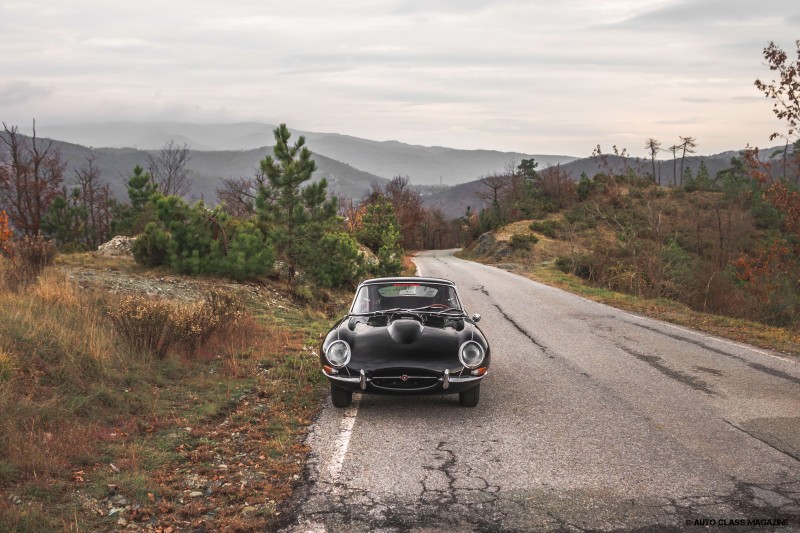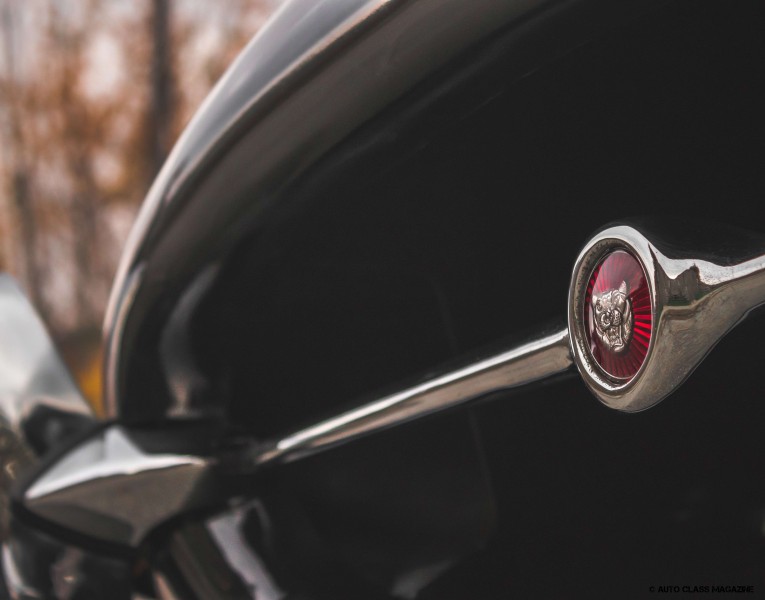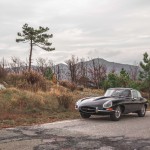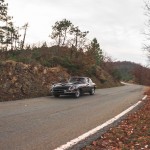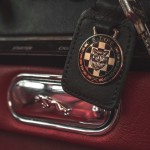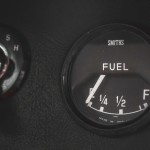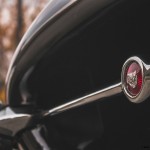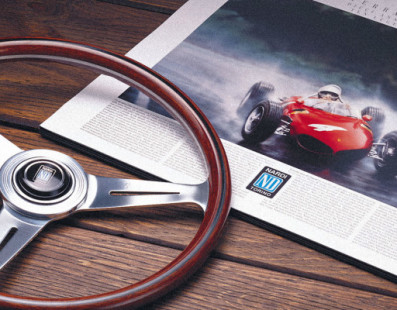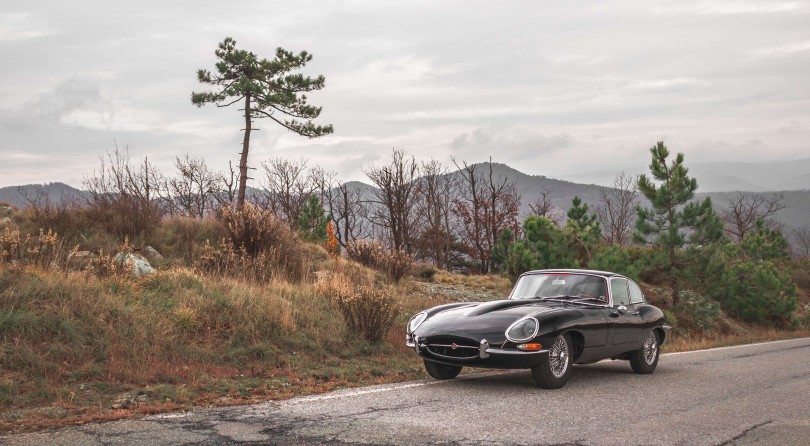
Jaguar E-Type | Vintage
JAGUAR E-TYPE
Words Roberto Marrone / Photos Andy Williams
1961-2021. It has been over 60 years since the E-Type was first introduced, but its appeal has remained unchanged. Its line is as timeless as when the car was presented at the Geneva Motor Show in mid-March of ’61. That day pandemonium broke out, no car before had ever been offered to the public with such a modern, persuasive, or even sexy shape. Jaguar’s founder himself Sr. William Lyons was there as well and with him also test driver Bob Berry who had the task of joining the press for first impressions drives. Bob had to work overtime and didn’t have a breather, given that the enthusiasm and curiosity to touch first hand the car was enormous; a success that had gone beyond the rosiest predictions.
The line created by Malcolm Sayer derived from the multi-victorious D-Type and was as fascinating and elegant as ever, in the words of Commendator Enzo Ferrari himself. The mechanics were also at the forefront with the 3,800 cc 6-cylinder that develops 265 horsepower and allows a maximum speed of 245 kph. In 1963 journalist and driver Paul Frère tested an example of the E-Type coupe reaching 256 kph, well above the one declared by the Company. Back in the days of its launch, as mentioned, everyone wanted to test it and Lyons knew he couldn’t afford to leave a single person without a chance at it. So, on the evening of the presentation, it was the moment of a famous phone call saying “Send me another one or hell breaks loose here”. It seemed an absurd request, impossible to drive a car for 1,300 kilometers in less than a day, indeed, in less than a night and in 1961! It should be remembered that there were no roads or motorways like today, but when Norman Dewis – racing driver and tester – received the call, he didn’t think twice, took a bag of apples and a bottle of milk and was immediately ready to go from Coventry to Geneva. He crossed the Channel, but losing the last ship to Calais he was forced to lengthen his way to retrieve a ferry to Ostend (Belgium), managing to catch it miraculously, then drove through the night making an epic journey without stopping and exploiting all of the power of the car. He crossed France (at the time there was no motorway going from the north French coast to the Alps) and so, on the main road, he ran into the night (11 hours straight) to satisfy a large group of anxious journalists who were waiting at the Hotel du Parc des Eaux Vives. Braving exhaustion and distance, at 8:15 am he arrived in the presence of a relieved and satisfied Lyons. A good wash and the E-Type was ready for testing and I would say already very well tested (1,300 km, at an average speed of 110 kph).
The first series of the E-Type was called Flat Floor, precisely because of its flat bottom, but as early as 1963 this specific was abandoned to give a little more space to the feet. During the same year, the dashboard and central tunnel cladding, previously covered in aluminum, also adopted black vinyl and leather. Still under the name First Series, comes the 4,200-cc engine, as the bodywork remains unchanged (65-66) as well as the interior, but adopts a Jaguar gearbox with the first gear synchronized instead of the Moss.
In 1966 the 2+2 version was released and the line was distorted to create two more seats: the roof higher, the 244 wheelbase became 267. Even Lyons found it unpleasant. The 2+2 adopts the aesthetic changes of the FHC (Fixed Head Coupe) sisters and the second version will then have the characteristics of the Second Series of the E-Type, in ’69, when it will change a lot both externally and on the interior.
Between ’67 and ’68 comes the “first and a half series”, which was deprived of many horses to comply with American anti-pollution regulations. Few aesthetic differences, such as the loss of the headlight fairing and the seats that become flat – perhaps more comfortable – but certainly less beautiful to look at. The three SU carburettors disappear, in their place two Zenith Strombergs. Speaking of E-Type we must always think of the two types of bodywork available, since after the FHC the OTS (Open Two Seater) was also released. How can you tell which is the most beautiful? Undeniably, the Coupe has a more particular line, while the open version logically loses that harmonious shape of the rear, but still remains one of the most beautiful convertibles ever built. I almost forgot, a Hard Top was also available for the OTS.
In ’69 it was time for the E-Type 4.2 Series 2, immediately proposed in the OTS, FHC and 2+2 versions. The new model underwent much more important (or devastating) updates, especially in terms of aesthetics. More massive bumpers were adopted, an increased air intake (to improve cooling), wider taillights placed under the bumper instead of above. All this visibly altered the purity of its lines, although it certainly did not transform it from a swan to an ugly duckling. The mechanics underwent changes and improvements, an enhanced braking system was used (with a larger diameter brake booster), a new cooling system (equipped with two fans), while power steering and air conditioning were made available as options. The passenger compartment benefited from the steering wheel with collapsible column and new seats with headrests.
In 1971 it was the turn of the Third Series equipped with the 5,343 cc 12-cylinder engine. Bigger wheels, much wider track and a 2+2 wheelbase: all this contributed to further losing the purity of the line, since it was necessary to widen the wheel arches and increase the size of the “mouth” with the addition of a grille. It was fitted with large bumpers and despite the better power, suffering from a heavier weight, instead of a brutal and not very docile grand tourer, it became more of an American coupe (most had automatic transmission), but that was the main market after all. The third series lost the steering wheel with wooden crown, but also the fantastic spoked wheels. In 1973, the arrival of the oil crisis certainly did not help and in 1974 the E-Type went out of production. Counting all the various series about 70,000 examples were built, so many, considering the type of car, but it must be said that the price was very competitive, a quality that Sr. Lyons has always wanted to maintain.
The E-Type has also been used in competitions by various teams, competing for example at Le Mans. Later, lighter versions were developed, called Lightweight and produced in 12 units (out of 18 planned) together with the Low Drag, in only 2 units (S850662 and S850663 frames), although it seems that a Lightweight was then modified to Low Drag. The same Jaguar – in 2014 – built the 6 remaining Lightweight units, the same thing it did with the XK-SS, since even here they had only built 16 out of the 25 planned, before a dramatic fire in the factory in February 1957 that also destroyed the molds.
In Italy, Giussani sisters adopted the E-Type as the car of their comic character born in 1962: “Diabolik” and who still strictly uses a first series coupe in all his adventures with faithful companion Eva Kant. Just in December 2021 and to celebrate the 60th birthday of the comic, a new Diabolik movie will be released and the E-Type will obviously be among the protagonist (apart from some chase scenes where a very little resembling copy has been prepared). Another film was shot in 1968 and directed by Mario Bava. The Company, when in ’62 saw its car represented in a comic strip and used by a character who had the reputation of being a famous thief, did not take it very well, but soon noticed that free advertising was not such a negative thing. Even today, when people point it on the street, very few say: “Look, an E-Type!” It’s easier to hear people saying: “It’s Diabolik’s car!”.
The differences between the various series over the years are many and unfortunately it is easy to see, due to untrue restorations or free interpretations by choice of the owners, details that belong to other versions fitted on the wrong models. The easiest to identify are the spoked rims which in the first series have the hub with a central recess and the wing nut with the tips. The second series should have smooth hubs and pinless wing nuts. The third series is born with the studs (or cups) like the sister XJ, but it is easy to always find “gallettoni“ with tips everywhere. Another change that is often seen is the addition of aluminum panels in the interior, dashboard and central tunnel, which already in 1963 left for black vinyl. But as you can imagine, the interpretations are many, even the writings on the tailgate are different between the various series, as well as the internal door panels, while the “Spitfire” type levers after 1967 give way to switches. For the seats, a clarification must be made: referring to the first series, therefore speaking of the famous shells or claw seats, the FHC was born with wider backrests, while the OTS has them narrower at the top to allow the hood pantographs being able to carry out more smoothly the transition. During production, however, the seats of the OTS were also fitted to many FHCs, so in this case it is not a free interpretation of the owner.
The only advice on the first series is to mount an additional fan in front of the radiator, since the standard one is not adequate for today’s traffic.
But what is the E-Type to drive? We hear a lot on this subject, some are urban legends, others are linked to habits, others are completely subjective. First of all, the carburetion must be well done, then you must avoid flooding it at start-up. The dimensions of the E-Type are different from any contemporary car: it is very narrow, you are sitting close to the rear wheels and if you are tall you will not be comfortable and you will have to move your knee to activate and deactivate the indicators lever, but rest assured that you will easily accept all of this. If you engage the first gear as usual, the scratching is sure, since to engage the first gear you have to first move the lever straight forward and it must be remembered that it is not synchronized (first series), just in case you’d like to avoid bad figures at traffic lights. Get used to the nose that goes where you can’t see. The steering wheel can be heavy, but to tell the truth, today’s ones are too power-assisted. The brakes are all four disc brakes, but compared to today’s standard, there is a difference in size; yes it brakes well, but you shouldn’t ask too much in intensive sports use.
Now a few words on its power: it is there and you can feel it, even if on a normal road you will never take the rev counter into the area where you will hear how the music changes, that is, above 4,000/4,500 rpm. It should be remembered that on most E-Types there is a speedometer with mph instead of kph, so to avoid fines, be careful. We come to the much-heralded legend on grip: first you need the right tires, not super cheap not even of some competitive brand and above all make sure you avoid corrections in the middle of the curve, which could unbalance it. The passion for vintage cars must go hand in hand with the correct use and if you want a car glued to the ground and that allows you to make curves without problems, or descend from an Alpine pass by violently stepping on the brakes in the last meters of each hairpin, buy yourself a modern Lotus. But if you really intend to drive a piece of automotive history, the Jaguar E-Type will know how to win you over, even dispelling at first glance any doubts as to why it has always been considered the most beautiful car in the world. As it did sixty years ago and how it will do for the next sixty and beyond.

